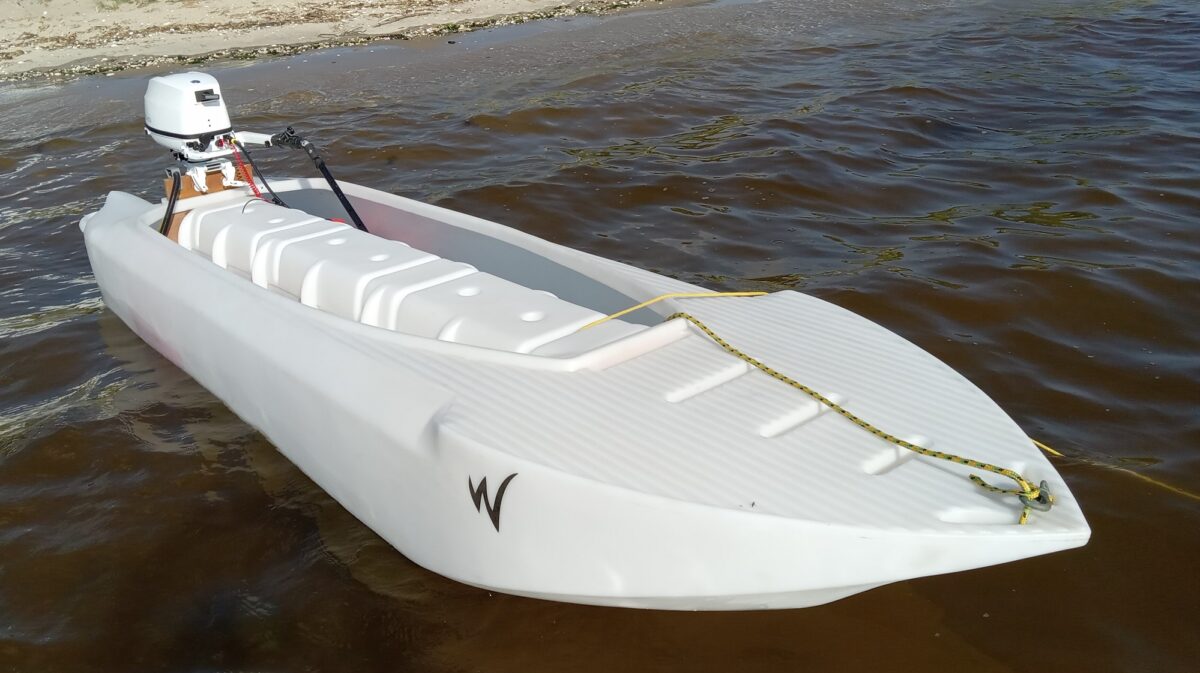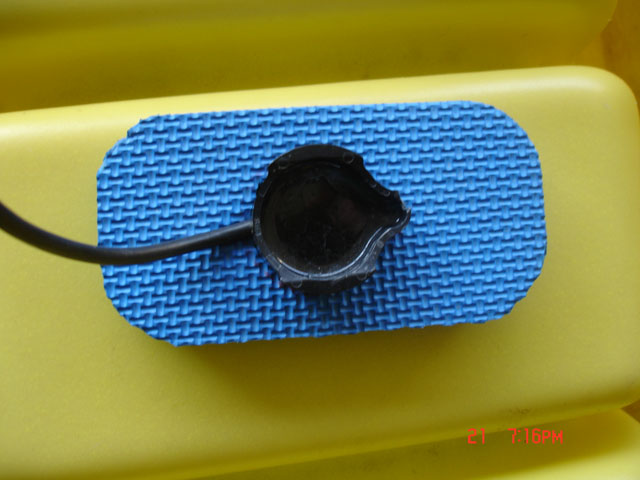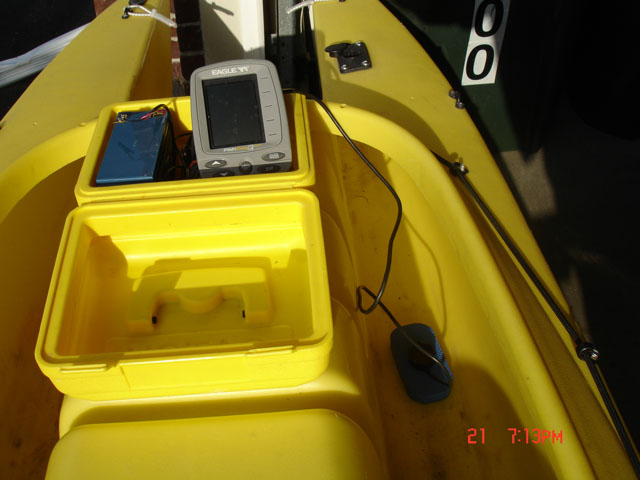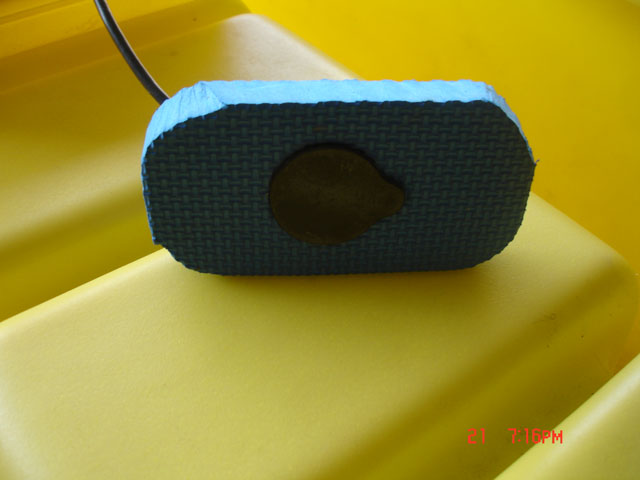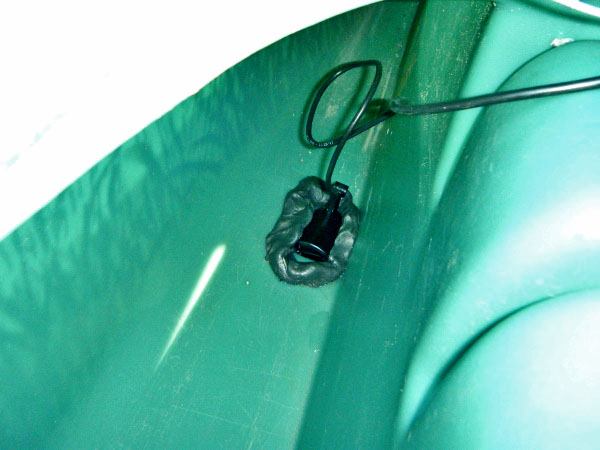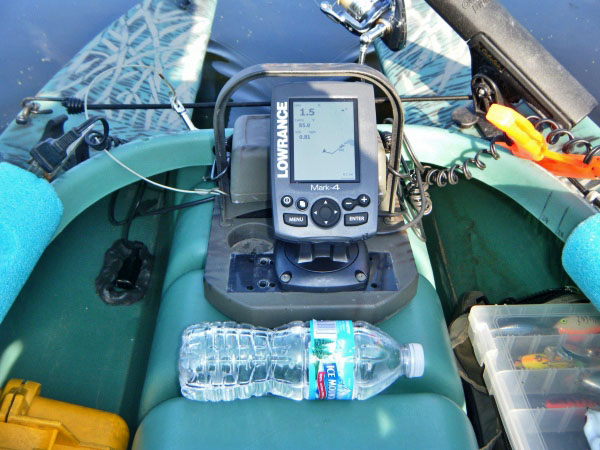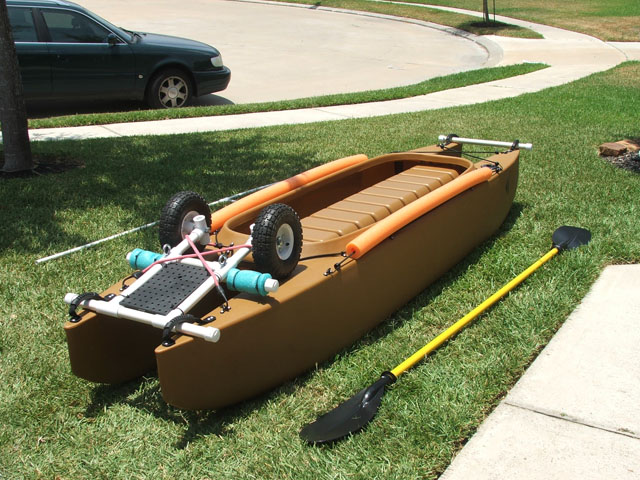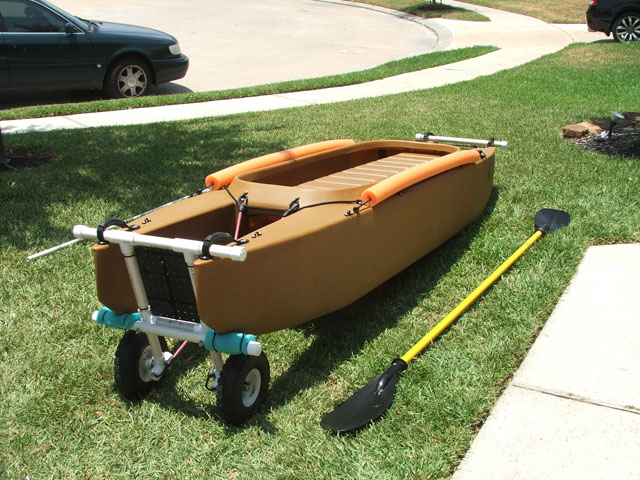Installing a Transducer in My W Fishing Kayak
By John Fabina
I recently upgraded to a combo fish finder GPS unit. I was using a suction cup to hold the transducer to the side of the W but I noticed it would create drag and occasionally fall off. I tried several different methods to mount it in the inside of the W and shoot it through the hull, not so successfully. Again sometimes the simplest method works the best. I wish I would have tried this first. On YouTube tube I noticed a installation using duct seal. I purchased 1lb. at under $3.
Simply form a well at the bottom, lay transducer flat to surface , pinch some of the duct seal over it to hold in place. When you start kayaking simply put a slight amount of water in the well you formed to cover bottom of the transducer and start enjoying drag free readings. This duct seal sticks great, is waterproof, remains soft, and is portable. If you want to move it to another W simply peel off and reset it.
John
Consequences and Hazards of Overloading a Fishing Kayak
What Happens When You Load a W Fishing Kayak?
The illustration below shows a W500 kayak in three load points –
The left image shows it unloaded.
The image in the middle shows it loaded with around 200 lbs (91 kg). The load is distributed evenly front and back, so the kayak stays level, which offers optimal speed and control. The draft is shallow.
This load results in a slight splaying of the hulls, and no problem at all. Flex is built into the W design.
The image on the right shows the kayak loaded with around 360 lb (163 kg), which is the maximum load recommended for it. Assuming the load is distributed evenly front and back, the kayak stays level, and it’s still fast, agile, and easy to paddle.
-Watch tandem paddling demo video >
The hulls are noticeably splayed, but sitting on the saddle is still very comfortable, and stability is still good. This amount of flex in the kayak is still perfectly normal.
Waterline is considerably lower than the saddle’s gussets (reinforcement ribs), so there is no hydrodynamic problem, since the water between the hulls flows without restrictions.
What Happens If You Overload This Kayak?
It’s important to realize that you can overload the kayak even if you don’t load it with more than its maximum recommended load capacity. This can happen if you’re a heavy person (over 240 lbs), and you paddle it, or fish from it while being seated in the back of its cockpit, and not its middle. If a heavy person operates their W kayak from the rear of its cockpit, they can cause the stern to draft too much, and the waterline to reach the saddle’s gussets, which would slow their kayak. Overloading the stern could also result in excessive splaying of the hulls there, and if this is done repeatedly, over a long period of time, it might damage the kayak. A person weighing over 260 lb (118 kg) should avoid paddling this kayak altogether, out of safety concerns.
Overloading the W kayak with passengers and gear in excess of 360 lb can be hazardous –
Although the passengers may still feel comfortable and stable, and enjoy plenty of free board on flat water, their kayak would draft too much, and the regular flow between its hulls would be disturbed by the saddle’s gussets. This would make the kayak slower and harder to paddle. Furthermore, the splaying in the hulls might increase to a point where they could be damaged by the extra stress, and the kayak crew might need to stop the trip and paddle to shore because of water seeping in. Such damage to the kayak is easy to fix later, but you definitely don’t want to take the risk of finding yourself in such a situation.
Recommendations:
- Do not overload your W kayak, whether you’re going solo or in tandem, paddling or motorizing.
- Do not paddle this kayak in tandem, unless both yourself and your paddling partner have each paddled it solo before, and gained sufficient experience as solo W kayakers.
- Take the time to learn how to paddle this kayak when it’s loaded – Like any vessel or vehicle, the W kayak behaves differently the more it is loaded.
- For optimal performance, keep your kayak level. In order to keep it level, paddle it from the middle of its cockpit, not its rear. This is especially true if you’re a heavy person.
- Do not paddle your W kayak from its rear, unless it’s just for a specific purpose, such as surf launching, beaching, or going over an obstacle.
- When motorizing, drive the kayak from the middle of the cockpit, using a long, articulated (jointed) tiller extension. Don’t drive it from the cockpit’s rear.
- When paddling in tandem, try as much possible to distribute the load evenly between the front and the back of the kayak. Do not overload the back
Versatility As A Major Attribute In A Fishing Kayak’s Design
Initial Fishing Kayak Review, in Tandem, and Transportation Wheels – Texas
FINALLY got it in the water this weekend. Saturday alone for about an hour and then on Sunday took my daughter with me. It is all you told me it was. Given my lack of experience, I was shocked at how easy it was to get around. Even with my 5’7″ fourteen year old daughter with me it was VERY stable. She wants one of her own now. I told her she could practice with mine and if she wanted to get into it, we’d talk.
I also built a prototype dolly. Water is about 200 yards from my house and needed a way to role it over. See pics. Making revisions and will make the final build this weekend. Is just swings up out of the way when you get to the water. Going to go with some lighter wheels and get rid of the metal eye hooks, but the concept works great. Kinda heavy at this point, but the revisions should knock a few pounds off. It got me to the water, which is the point of a dolly.
Also started working on a “roof.” Its coming along great and will forward pics. I think it will be a nice way to keep the sun off me when our fishing.
Craig
